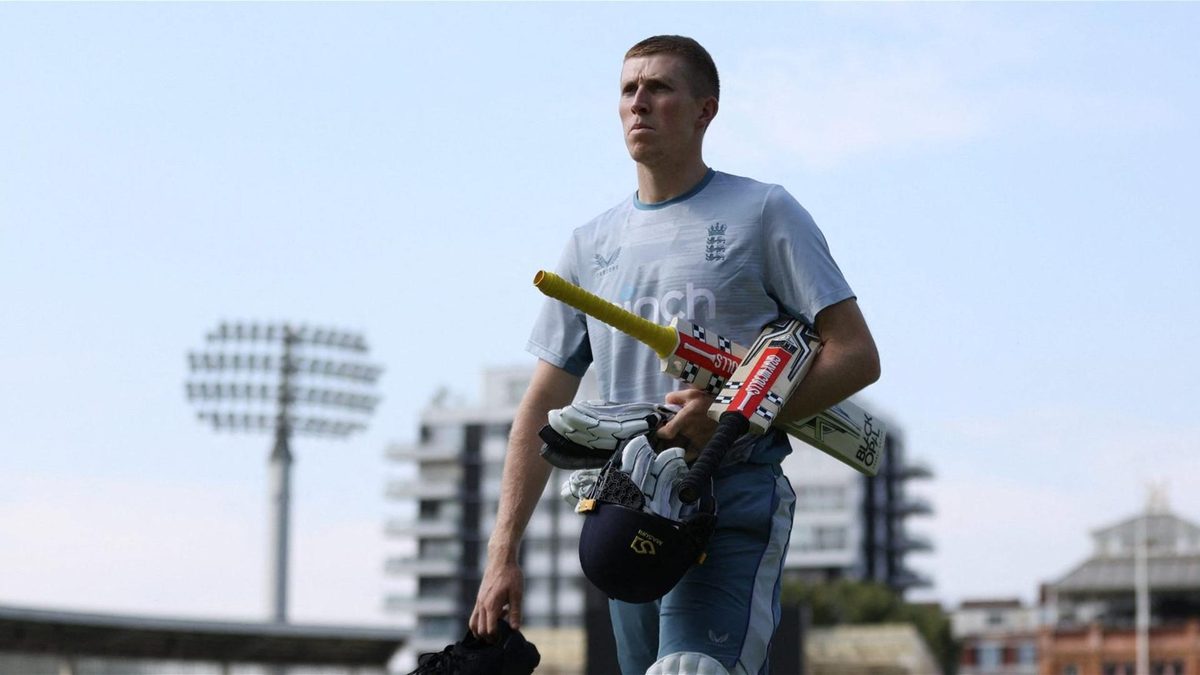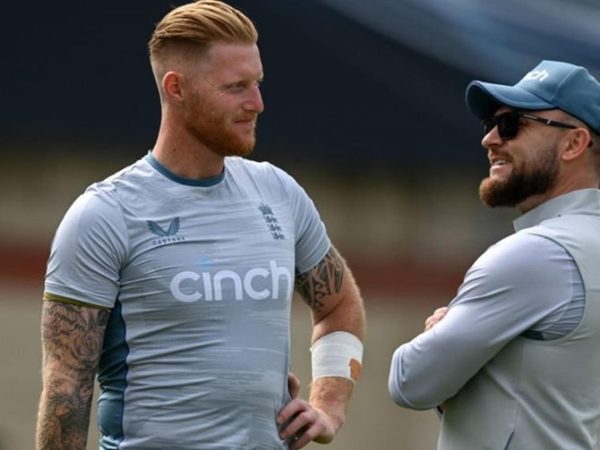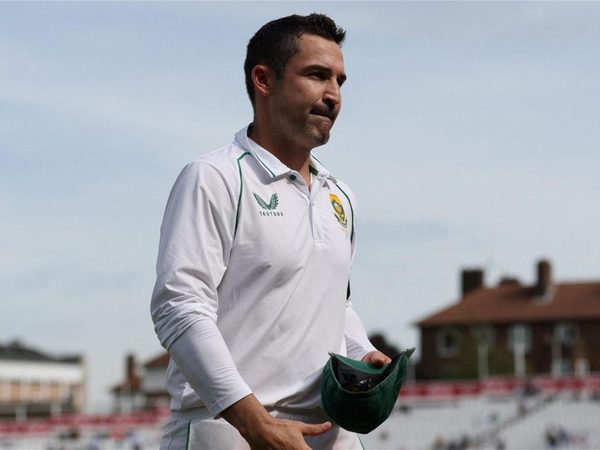
Ben Gardner tries to answer the real Zak Crawley question.
Clearly, we need to talk about Zak Crawley. But the strange thing about this conversation is, basically everyone, at this point, is in agreement. England’s fans and pundits are virtually unified in thinking he should be left out of the side after a run of scores that has seen him pass 15 in just four of his last fourteen innings. Show me someone who thinks Crawley is on the verge of transforming into a top-class opener and I’ll say, ‘I didn’t know you knew Rob Key.’
Crawley has become English cricket’s version of the Sunk Cost fallacy made flesh. He must be a player worth sticking with. Otherwise, why would England have stuck with him for so long? This is useful in understanding why Brendon McCullum, an advanced, clear-headed thinker in general, will say things like “his skillset is not to be a consistent player”, or describe a batter with an average of 18 in Test wins as “a match-winner”. The logic is reversed. McCullum has been assured that Crawley is the real deal, and can see that he’s not yet ready to be a consistent player. So the only conclusion is, you can be a good Test player without being consistent.
So the question to try and answer isn’t, should Zak Crawley keep his place in the England team? Instead, the puzzle is, how did we get to this point at all?
New Zealand v England, November 2019
In September 2019, there was a defined sense of sands shifting, of a transition in progress. That summer, England had won the men’s World Cup for the first time, but also failed to win a home Ashes series for the first time in 18 years. Trevor Bayliss had left the scene, with Chris Silverwood taking his place. First up was a two-Test tour of New Zealand, not part of the World Test Championship, and therefore perfect for experimentation.
Ed Smith, a selector who needed no encouragement to get funky, duly obliged, with England’s squad including an ‘Under-24 seven’, a label which scandalously failed to take off. Among the four uncapped players was Crawley, long touted as a player of promise, coming off a County Championship in which he had averaged 34.16. It was a punt, but then so were plenty of others. And in a fallow year for batters across the country, Crawley sat eighth in the Division One run charts.
Crawley made an unexpected debut in the second Test after an injury to Jos Buttler, coming in at No.6. He narrowly avoided being run out to get off the mark, and was nicked off by Neil Wagner for one off six.
South Africa v England, January 2020
Crawley retained his place in England’s squad, but was moved aside in the XI for Jonny Bairstow, recalled two Tests after being dropped. Then Rory Burns got clattered, football was banned (oh for a time when English cricket’s most divisive culture war was whether it was OK to kick a ball around in a warm-up) and Crawley was back in.
He did well too. He made new career bests in each of his first five innings, the last of which, 66 out of a total of 400, remains his only half-century in a Test win. He saw off Vernon Philander and Anrich Nortje. What the scouts had seen made sense. Here was a player with that extra fraction of a second against the proper quicks, the lack of which can easily see a player fail to make the step up from county cricket to the top level.
England v West Indies, July 2020
Still, come the summer Crawley’s place was far from secure. Burns, touted as a soon-to-be England captain before that dreaded ankle-roll, was back fit. Dom Sibley could block it with the best of them and averaged 39.50 after 10 Tests. Joe Denly could Do A Job™. It wasn’t clear exactly how Crawley would fit in.
Joe Root’s absence for the first Test gave Crawley a chance, the birth of his second child meaning he couldn’t re-bubble in time. Denly made 47 stodgy runs, Crawley 89 pretty ones, and that was that. England, under Ben Stokes, lost. Root would go through the year unbeaten. This captaincy lark, it seemed, wasn’t for everyone.
England v Pakistan, August 2020
Still, Crawley’s position in the side was precarious, and he was moved out for two Tests to accommodate Ben Stokes’ inability to bowl due to injury, before being moved back in after Stokes left the country altogether. Then he made 267 against Pakistan, and his position for the next ten years was secure.
Sri Lanka and India, early 2021
Two Tests, a slip on a dressing room floor, and then two more Tests. One dreamy half-century, England’s only innings of note in that blighted Ahmedabad two-dayer, and no other score above 15. The left-arm spin troubles started. A year later, he said that the conditions were so tough, “10 felt like a good score”, which wasn’t as wrong as it would have been in other situations. Back home, with the memories of that 267 still fresh, England stuck with him.
England v New Zealand and India, May 2021
Three Tests later and Crawley was dropped. That Ahmedabad fifty had remained his only score above 30 of the year. His average stood at 28.34. Haseeb Hameed was back in form and back in, though his recall also revealed the paucity of options; at that point, he had made hundreds in just three first-class games across a four-and-a-half year span.
Australia and West Indies, 2021-22
Crawley missed all of three Tests before finding himself in a Test squad again. In the interim, he played four games in Division Three of the County Championship, averaged 38, made a high score of 68, and won a central contract. Notably Hameed, one of the incumbent openers, had not. Crawley had the game for Australia, was the theory. He was (and is) tall, and could ride the bounce. He could play the quicks. It was another punt.
And it worked, to the extent that he was one of the few to emerge from a 4-0 drubbing with his dignity intact. He might have only averaged 28, but that included a punchy 77 at Sydney, and a share in England’s highest Ashes opening stand since 2013. There were few qualms when he kept his spot for West Indies, and even fewer when he peeled off his second Test century in the first drawn Test. He is yet to pass 50 for England since.
England v New Zealand, India, and South Africa, 2022
That brings us, roughly, up to the present. Crawley has averaged 24.25 for Kent this season, with three fifties. For England, he has averaged 16.40, the worst by an England opener in a home summer, with a cut-off of 10 innings. Punchy 40-odds bookended the first Test block of the summer, the first key in a low-scorer, and the second setting the tone in a record chase.
In the game before England’s Test series against South Africa, his career first-class average dropped below 30. His Test average sits at 26.06, higher than that of his opening partner Alex Lees, but also the second-lowest of any England batter in history with as many games in the top six.
Up until now, the story has been one of logic intermingling with hope, with ‘the eye test’ tying it all together. The lack of obvious alternatives has also worked in Crawley’s favour. No matter what England insist, this can’t go on forever. Whether it ends up in a conclusion or a continuation is down to Crawley himself.








